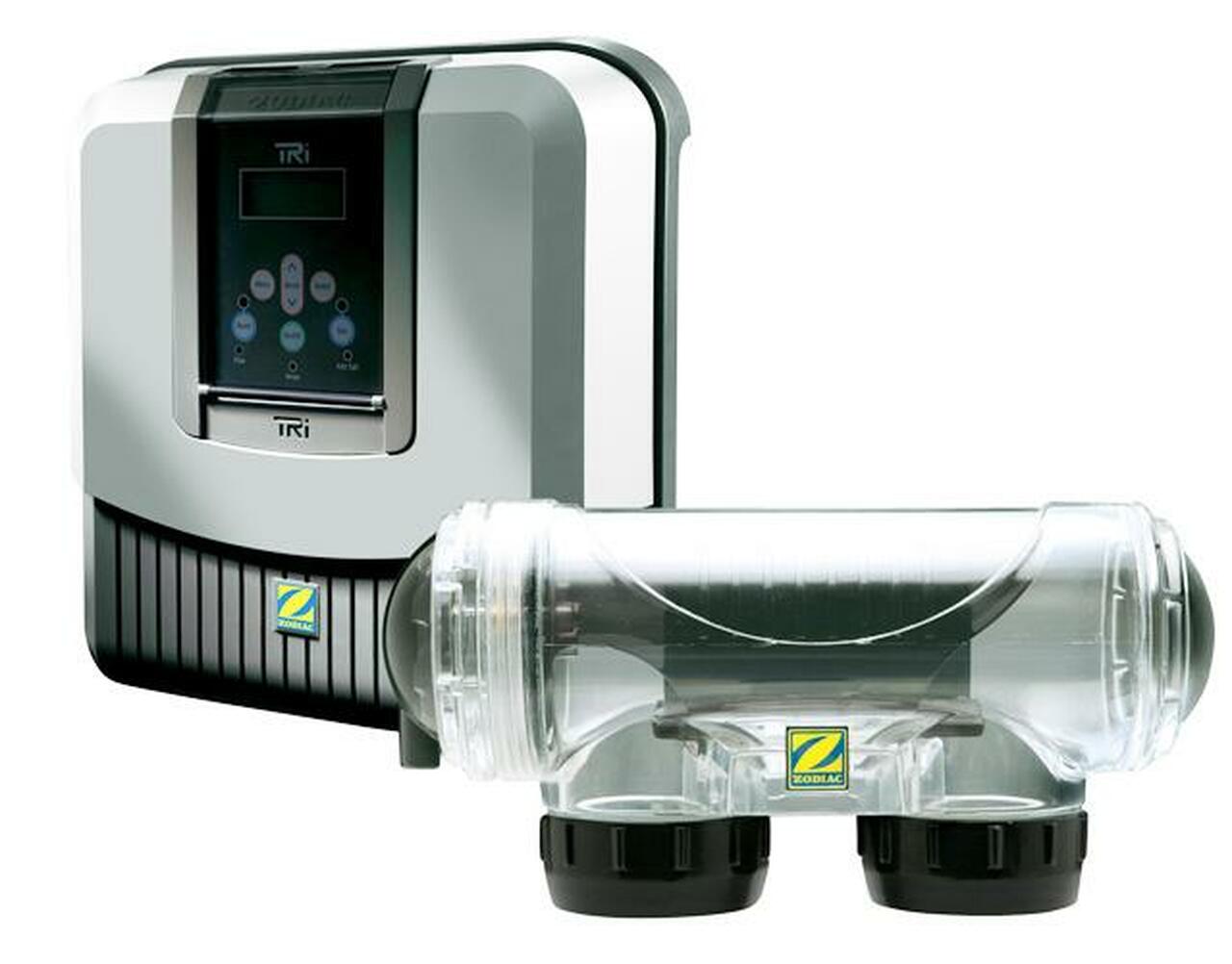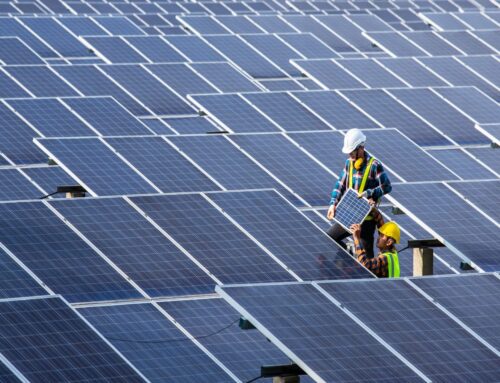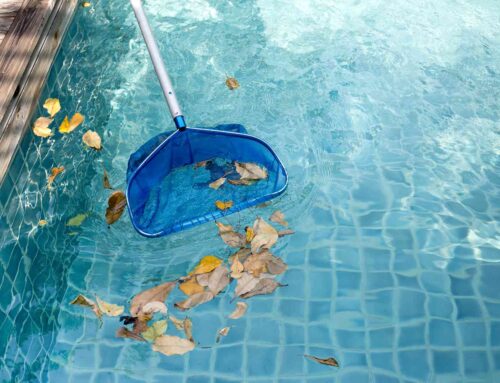Common Saltwater Pool Mistakes
If you have a saltwater pool your maintenance is a slightly different to traditional pool care. The main difference being you don’t have to add as many chemicals with a saltwater pool. However, you do have to balance your water and care for your pool equipment in a different manner. So here are 9 common saltwater pool maintenance errors and how to avoid them.
- Mistake number one is assuming a saltwater pool has no chlorine. When you add salt to your pool, your saltwater generator uses that dissolved salt to create chlorine. So, your saltwater pool is still a chlorine pool. The only difference is that you are creating chlorine by adding salt instead of chemicals.
You get a lower level of chlorine than you do in a typical freshwater pool which means that the swimming experience is a lot gentler on your eyes and skin.
- Mistake number two is not to test your free chlorine levels each week. Although your saltwater generator produces chlorine, you still need to test your water each week to ensure you have the right balance for optimum sanitisation. This level should be around 3 parts per million for the ideal result. This can be easily checked by using chemical test strips and then adjusting your saltwater generator as needed. If you find that the levels are not ideal, it is not a bad idea to keep the chlorine levels a bit higher than you would with a freshwater pool. You need enough saltwater in your system to ensure that your generator runs efficiently due to the way chlorine is produced and dispersed by your equipment. Also check regularly for calcium build up on your salt cells.
- Mistake number three is not checking your pH levels. Your pH will always be a little bit higher in a saltwater pool because the saltwater generator naturally raises your pH. High pH levels above 7.6 can potentially lead to skin irritation, burning eyes and cause scaling on your pool equipment. By testing and balancing your pH levels every week you can see if it is necessary to add pH-, or lower your pH levels with muriatic acid. Ensure your other levels are balanced like your Cyanuric Acid (a pool balancing product used to help chlorine last longer) and check the runtimes on your saltwater generator. Remember, it’s your saltwater generator running that produces higher pH levels.
- Mistake number four is adding too much salt too quickly. The upside of a saltwater pool is once you add the salt it stays in the water. Salt doesn’t evaporate and that means it can continuously flow through your saltwater generator and produce chlorine. The downside is if you add too much salt, it becomes time consuming to lower your levels. The salinity levels will only go down after heavy rainfalls or by manually diluting your water, so add the salt gradually and test the levels after each application to ensure you do not over salt the pool.
- Mistake number five is not testing your salinity or salt levels by hand. Most saltwater generators have a display which indicates the level of salinity in the pool. However, it is a good idea to regularly check the levels manually to make sure you are not getting false readings. We suggest you do this monthly, and more often during times of heavy use or heavy rainfall. You can purchase saltwater test strips or a digital salinity meter at reasonable costs and compare the readings with the recommended instructions for your saltwater generator.
- Mistake number six is not testing and balancing your alkalinity stabiliser and calcium hardness levels each month. Alkalinity in your pool helps to shield your pH from fluctuations. The current recommended level is between 100 and 130 parts per million, but do not forget that your saltwater generator will naturally increase your pH level. If you find that your alkalinity levels are a bit on the low side, you can correct this with alkalinity increaser or even baking soda. If the alkalinity levels are too high, then use pH decreaser or muriatic acid. Also bear in mind that in a traditional freshwater pool, stabiliser levels are ideal at around 40 parts per million. However, in a saltwater pool, it is prudent to increase those levels to around 75 parts per million to aid maintaining the correct chlorine levels.
- Mistake number seven is omitting to “shock” your pool on a regular basis. “Shocking” refers to the process of adding chlorine or non-chlorine pool chemicals to the water in order to raise the “free chlorine” level. The goal is to raise this level to a point where contaminants such as algae, chloramines and bacteria are destroyed. It is possible that your saltwater generator has a boost feature whereby it can disperse additional chlorine into your water. It is recommended that you shock your pool more regularly in the summer months, making sure that you carry out this task at night time to avoid the sun burning the chlorine away. After you have completed this, check your levels again the next day.
- Mistake number eight is allowing high salt levels to break down your pool equipment and surfaces. Under normal circumstances and with the correct levels of salinity, saltwater is not damaging. But if it builds up on areas such as your pool liner it can quickly lead to a replacement being necessary. Pool lube is commonly used to avert these problems. Lube is an environmentally safe, multi-purpose lubricant and sealant. It works extremely well with swimming pool parts and equipment like O-rings, gaskets, valves, unions, water filters, and more. Its unique formula is waterproof, odourless, and biodegradable. For ladders and surfaces around your pool, a good hose off with fresh water once a week will do the trick.
- Finally, mistake number nine is overlooking the maintenance of your salt cell. You need to clean calcium deposits from the salt cell at least once every 3 months. This can be achieved very easily using a high pressure cleaner. If you find some tougher deposits that are hard to shift, a diluted solution of muriatic acid will generally finish the job.
Please visit our website on a regular basis for more tips on pool maintenance.


Common Saltwater Pool Mistakes
If you have a saltwater pool your maintenance is a slightly different to traditional pool care. The main difference being you don’t have to add as many chemicals with a saltwater pool. However, you do have to balance your water and care for your pool equipment in a different manner. So here are 9 common saltwater pool maintenance errors and how to avoid them.
- Mistake number one is assuming a saltwater pool has no chlorine. When you add salt to your pool, your saltwater generator uses that dissolved salt to create chlorine. So, your saltwater pool is still a chlorine pool. The only difference is that you are creating chlorine by adding salt instead of chemicals.
You get a lower level of chlorine than you do in a typical freshwater pool which means that the swimming experience is a lot gentler on your eyes and skin.
- Mistake number two is not to test your free chlorine levels each week. Although your saltwater generator produces chlorine, you still need to test your water each week to ensure you have the right balance for optimum sanitisation. This level should be around 3 parts per million for the ideal result. This can be easily checked by using chemical test strips and then adjusting your saltwater generator as needed. If you find that the levels are not ideal, it is not a bad idea to keep the chlorine levels a bit higher than you would with a freshwater pool. You need enough saltwater in your system to ensure that your generator runs efficiently due to the way chlorine is produced and dispersed by your equipment. Also check regularly for calcium build up on your salt cells.
- Mistake number three is not checking your pH levels. Your pH will always be a little bit higher in a saltwater pool because the saltwater generator naturally raises your pH. High pH levels above 7.6 can potentially lead to skin irritation, burning eyes and cause scaling on your pool equipment. By testing and balancing your pH levels every week you can see if it is necessary to add pH-, or lower your pH levels with muriatic acid. Ensure your other levels are balanced like your Cyanuric Acid (a pool balancing product used to help chlorine last longer) and check the runtimes on your saltwater generator. Remember, it’s your saltwater generator running that produces higher pH levels.
- Mistake number four is adding too much salt too quickly. The upside of a saltwater pool is once you add the salt it stays in the water. Salt doesn’t evaporate and that means it can continuously flow through your saltwater generator and produce chlorine. The downside is if you add too much salt, it becomes time consuming to lower your levels. The salinity levels will only go down after heavy rainfalls or by manually diluting your water, so add the salt gradually and test the levels after each application to ensure you do not over salt the pool.
- Mistake number five is not testing your salinity or salt levels by hand. Most saltwater generators have a display which indicates the level of salinity in the pool. However, it is a good idea to regularly check the levels manually to make sure you are not getting false readings. We suggest you do this monthly, and more often during times of heavy use or heavy rainfall. You can purchase saltwater test strips or a digital salinity meter at reasonable costs and compare the readings with the recommended instructions for your saltwater generator.
- Mistake number six is not testing and balancing your alkalinity stabiliser and calcium hardness levels each month. Alkalinity in your pool helps to shield your pH from fluctuations. The current recommended level is between 100 and 130 parts per million, but do not forget that your saltwater generator will naturally increase your pH level. If you find that your alkalinity levels are a bit on the low side, you can correct this with alkalinity increaser or even baking soda. If the alkalinity levels are too high, then use pH decreaser or muriatic acid. Also bear in mind that in a traditional freshwater pool, stabiliser levels are ideal at around 40 parts per million. However, in a saltwater pool, it is prudent to increase those levels to around 75 parts per million to aid maintaining the correct chlorine levels.
- Mistake number seven is omitting to “shock” your pool on a regular basis. “Shocking” refers to the process of adding chlorine or non-chlorine pool chemicals to the water in order to raise the “free chlorine” level. The goal is to raise this level to a point where contaminants such as algae, chloramines and bacteria are destroyed. It is possible that your saltwater generator has a boost feature whereby it can disperse additional chlorine into your water. It is recommended that you shock your pool more regularly in the summer months, making sure that you carry out this task at night time to avoid the sun burning the chlorine away. After you have completed this, check your levels again the next day.
- Mistake number eight is allowing high salt levels to break down your pool equipment and surfaces. Under normal circumstances and with the correct levels of salinity, saltwater is not damaging. But if it builds up on areas such as your pool liner it can quickly lead to a replacement being necessary. Pool lube is commonly used to avert these problems. Lube is an environmentally safe, multi-purpose lubricant and sealant. It works extremely well with swimming pool parts and equipment like O-rings, gaskets, valves, unions, water filters, and more. Its unique formula is waterproof, odourless, and biodegradable. For ladders and surfaces around your pool, a good hose off with fresh water once a week will do the trick.
- Finally, mistake number nine is overlooking the maintenance of your salt cell. You need to clean calcium deposits from the salt cell at least once every 3 months. This can be achieved very easily using a high pressure cleaner. If you find some tougher deposits that are hard to shift, a diluted solution of muriatic acid will generally finish the job.
Please visit our website on a regular basis for more tips on pool maintenance.






Leave A Comment
You must be logged in to post a comment.